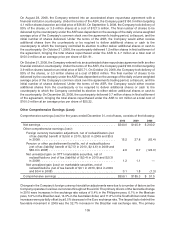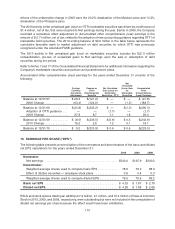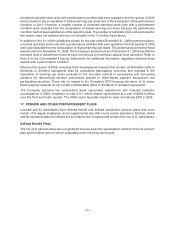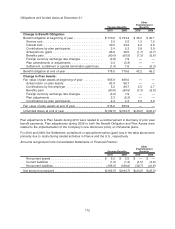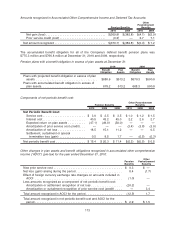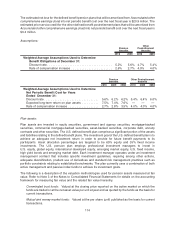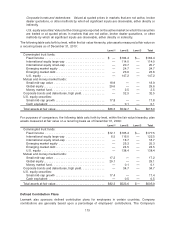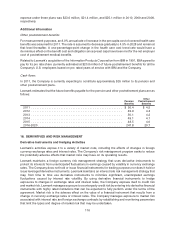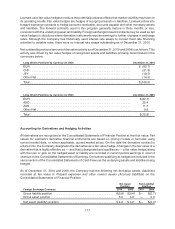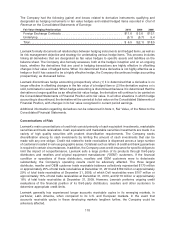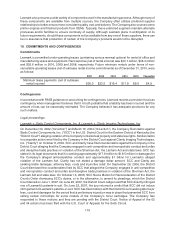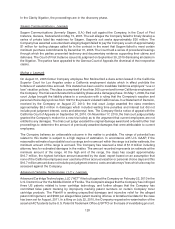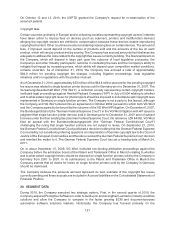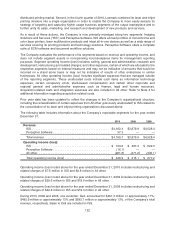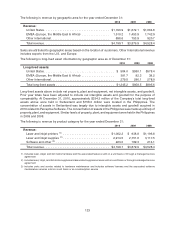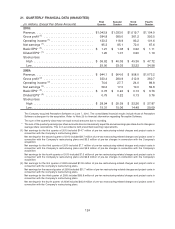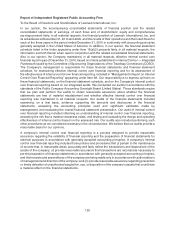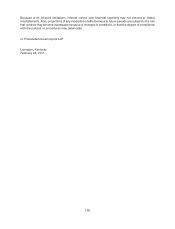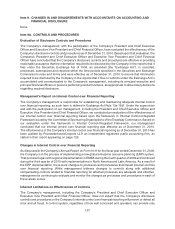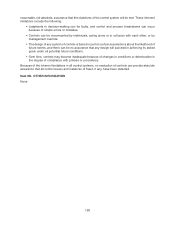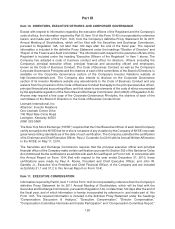Lexmark 2010 Annual Report Download - page 125
Download and view the complete annual report
Please find page 125 of the 2010 Lexmark annual report below. You can navigate through the pages in the report by either clicking on the pages listed below, or by using the keyword search tool below to find specific information within the annual report.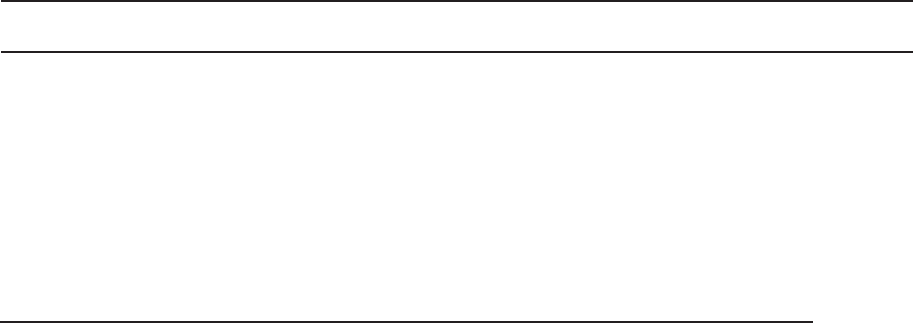
Lexmark also procures a wide variety of components used in the manufacturing process. Although many of
these components are available from multiple sources, the Company often utilizes preferred supplier
relationships to better ensure more consistent quality, cost and delivery. The Company also sources some
printer engines and finished products from OEMs. Typically, these preferred suppliers maintain alternate
processes and/or facilities to ensure continuity of supply. Although Lexmark plans in anticipation of its
future requirements, should these components not be available from any one of these suppliers, there can
be no assurance that production of certain of the Company’s products would not be disrupted.
19. COMMITMENTS AND CONTINGENCIES
Commitments
Lexmark is committed under operating leases (containing various renewal options) for rental of office and
manufacturing space and equipment. Rent expense (net of rental income) was $43.1 million, $48.3 million
and $55.6 million in 2010, 2009 and 2008, respectively. Future minimum rentals under terms of non-
cancelable operating leases (net of sublease rental income commitments) as of December 31, 2010, were
as follows:
2011 2012 2013 2014 2015 Thereafter
Minimum lease payments (net of sublease
rental income) $30.0 $23.5 $16.4 $11.8 $9.0 $4.9
Contingencies
In accordance with FASB guidance on accounting for contingencies, Lexmark records a provision for a loss
contingency when management believes that it is both probable that a liability has been incurred and the
amount of loss can be reasonably estimated. The Company believes it has adequate provisions for any
such matters.
Legal proceedings
Lexmark v. Static Control Components, Inc. & Lexmark v. Clarity Imaging Technologies, Inc.
On December 30, 2002 (“02 action”) and March 16, 2004 (“04 action”), the Company filed claims against
Static Control Components, Inc. (“SCC”) in the U.S. District Court for the Eastern District of Kentucky (the
“District Court”) alleging violation of the Company’s intellectual property and state law rights. Similar claims
in a separate action were filed by the Company in the District Court against Clarity Imaging Technologies,
Inc. (“Clarity”) on October 8, 2004. SCC and Clarity have filed counterclaims against the Company in the
District Court alleging that the Company engaged in anti-competitive and monopolistic conduct and unfair
and deceptive trade practices in violation of the Sherman Act, the Lanham Act and state laws. SCC has
stated in its legal documents that it is seeking approximately $17.8 million to $19.5 million in damages for
the Company’s alleged anticompetitive conduct and approximately $1 billion for Lexmark’s alleged
violation of the Lanham Act. Clarity has not stated a damage dollar amount. SCC and Clarity are
seeking treble damages, attorney fees, costs and injunctive relief. On September 28, 2006, the District
Court dismissed the counterclaims filed by SCC that alleged the Company engaged in anti-competitive
and monopolistic conduct and unfair and deceptive trade practices in violation of the Sherman Act, the
Lanham Act and state laws. On October 13, 2006, SCC filed a Motion for Reconsideration of the District
Court’s Order dismissing SCC’s claims, or in the alternative, to amend its pleadings, which the District
Court denied on June 1, 2007. On June 20, 2007, the District Court Judge ruled that SCC directly infringed
one of Lexmark’s patents-in-suit. On June 22, 2007, the jury returned a verdict that SCC did not induce
infringement of Lexmark’s patents-in-suit. SCC has filed motions with the District Court seeking attorneys’
fees, cost and damages for the period that a preliminary injunction was in place that prevented SCC from
selling certain microchips for some models of the Company’s toner cartridges. The Company has
responded to these motions and they are pending with the District Court. Notice of Appeal of the 02
and 04 actions has been filed with the U.S. Court of Appeals for the Sixth Circuit.
119


